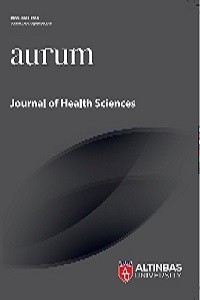Classification of COVID-19 Omicron variant using Hybrid Deep Transfer Learning based on X-Ray images chest
In 2019, the first case of COVID-19 was announced in China in Wuhan Province. Which led to the panic of the world and the declaration of a state of extreme emergency by the World Health Organization. Given that the world was in a state of crisis and closure, the use of deep learning technology provides speed and accuracy in diagnosing disease through chest images. Therefore, in this study, the dental X-Ray images of people infected with the omicron strain of Covid-19 virus were classified in comparison with a group of healthy people. In this study, we used 4 types of pre-trained deep learning algorithms in two ways, the first is using cross-validation and the second is the hybrid method by extracting the features from the models and then applying them to two types of deep learning algorithms (SVM and KNN). Accuracy results were obtained in the first scenario with a percentage of 94%, while in the second scenario, the accuracy results in the SVM classifier are higher than KNN with a difference of 5%, which is 92%. We also compared studies that used X-Ray images to classify COVID-19, as our results showed a clear superiority compared to other studies.
Anahtar Kelimeler:
Classification, CNN, SVM, KNN, Deep Transfer Learning, Feature Extraction
Classification of COVID-19 Omicron variant using Hybrid Deep Transfer Learning based on X-Ray images chest
In 2019, the first case of COVID-19 was announced in China in Wuhan Province. Which led to the panic of the world and the declaration of a state of extreme emergency by the World Health Organization. Given that the world was in a state of crisis and closure, the use of deep learning technology provides speed and accuracy in diagnosing disease through chest images. Therefore, in this study, the dental X-Ray images of people infected with the omicron strain of Covid-19 virus were classified in comparison with a group of healthy people. In this study, we used 4 types of pre-trained deep learning algorithms in two ways, the first is using cross-validation and the second is the hybrid method by extracting the features from the models and then applying them to two types of deep learning algorithms (SVM and KNN). Accuracy results were obtained in the first scenario with a percentage of 94%, while in the second scenario, the accuracy results in the SVM classifier are higher than KNN with a difference of 5%, which is 92%. We also compared studies that used X-Ray images to classify COVID-19, as our results showed a clear superiority compared to other studies.
Keywords:
Classification, CNN, SVM, KNN, Deep Transfer Learning, Feature Extraction,
___
- Al-Jumaili, S., et al. (2021). Covid-19 X-ray image classification using SVM based on Local Binary Pattern. 2021 5th International Symposium on Multidisciplinary Studies and Innovative Technologies (ISMSIT), IEEE.
- ISSN: 2651-2815
- Yayın Aralığı: Yılda 3 Sayı
- Başlangıç: 2018
- Yayıncı: Altınbaş Üniversitesi
